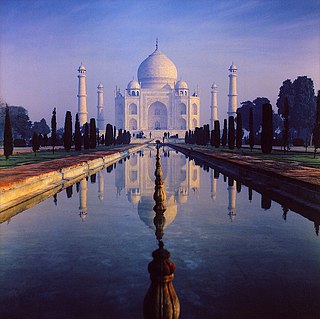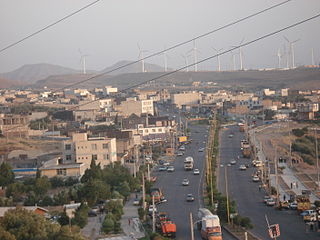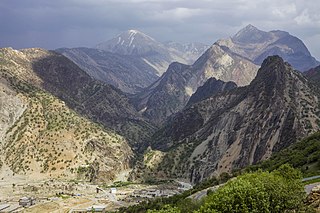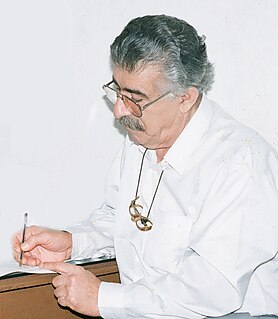
Persian literature comprises oral compositions and written texts in the Persian language and it is one of the world's oldest literatures. It spans over two-and-a-half millennia. Its sources have been within Greater Iran including present-day Iran, Iraq, Afghanistan, the Caucasus, and Turkey, regions of Central Asia and South Asia where the Persian language has historically been either the native or official language. For instance, Rumi, one of best-loved Persian poets born in Balkh or Vakhsh, wrote in Persian and lived in Konya, then the capital of the Seljuks in Anatolia. The Ghaznavids conquered large territories in Central and South Asia and adopted Persian as their court language. There is thus Persian literature from Iran, Afghanistan, Mesopotamia, Azerbaijan, the wider Caucasus, Turkey, western parts of Pakistan, India, Tajikistan and other parts of Central Asia. Not all Persian literature is written in Persian, as some consider works written by ethnic Persians in other languages, such as Greek and Arabic, to be included. At the same time, not all literature written in Persian is written by ethnic Persians or Iranians, as Turkic, Caucasian, and Indic poets and writers have also used the Persian language in the environment of Persianate cultures.

Ahmad Shamlou was an Iranian poet, writer, and journalist. Shamlou was arguably the most influential poet of modern Iran. His initial poetry was influenced by and in the tradition of Nima Youshij. Shamlou's poetry is complex, yet his imagery, which contributes significantly to the intensity of his poems, is simple. As the base, he uses the traditional imagery familiar to his Iranian audience through the works of Persian masters like Hafiz and Omar Khayyám. For infrastructure and impact, he uses a kind of everyday imagery in which personified oxymoronic elements are spiked with an unreal combination of the abstract and the concrete thus far unprecedented in Persian poetry, which distressed some of the admirers of more traditional poetry.

Urdu literature is literature in the Urdu language. has a history that is inextricably tied to the development of Urdu, the register of the Hindustani language written in the Perso-Arabic script. While it tends to be dominated by poetry, especially the verse forms of the ghazal and nazm, it has expanded into other styles of writing, including that of the short story, or afsana.

Manjil is a city in the Central District of Rudbar County, Gilan Province, Iran. At the 2006 census, its population was 16,028, in 4,447 families.
Amīr ash-Shu‘arā’ Abū Abdullāh Muḥammad b. ‘Abd al-Malik Mu‘izzī of Neyshāpūr was a Persian poet. He ranks as one of the great masters of the Persian panegyric form known as qasideh.

In the Persian epic of Shahnameh Div-e Sepid, or Div-e Sefid, is the chieftain of the Divs (demons) of Mazandaran. He is a huge being. He possesses great physical strength and is skilled in sorcery and necromancy. He destroys the army of Kay Kavus by conjuring a dark storm of hail, boulders, and tree trunks using his magical skills. He then captures Kay Kavus, his commanders, and paladins; blinds them, and imprisons them in a dungeon. The greatest Persian mythical hero Rostam undertakes his "Seven Labors" to free his sovereign. At the end, Rostam slays Div-e Sefid and uses his heart and blood to cure the blindness of the king and the captured Persian heroes. Rostam also takes the Div's head as a helmet and is often pictured wearing it.

Rudbar is a city and capital of Rudbar County, Gilan Province, Iran. At the 2006 census, its population was 11,454, in 3,303 families.

Aqqala County, is a county in Golestan Province in Iran. The capital of the county is Aqqala. At the 2006 census, the county's population was 109,440, in 22,804 families. The county consists of two districts: Voshmgir District and Central District. The county has two cities: Anbar Olum and Aqqala.
Sepideh is a female Persian name that means the break of dawn, morning twilight, or first lights in the sky appearing before sunrise. The word Sepideh symbolizes beauty and coming of a better time after a long hard era in Persian literature as Sepideh eliminates darkness of night and indicates start of a new bright day.

Seyed Javad Hashemi Pourasl is an Iranian actor, film director, writer and composer.

Sepiddasht is a city in and capital of Papi District, in Khorramabad County, Lorestan Province, Iran. At the 2006 census, its population was 3,197, in 683 families.
Kuchesfahan District is a district (bakhsh) in Rasht County, Gilan Province, Iran. At the 2006 census, its population was 49,278, in 14,262 families. The District has one city: Kuchesfahan. The District has three rural districts (dehestan): Belesbeneh Rural District, Kenar Sar Rural District, and Luleman Rural District.

Rig-e Sefid is a village in Doab Rural District, in the Central District of Selseleh County, Lorestan Province, Iran. At the 2006 census, its population was 30, in 7 families.

Gur Sepid is a village in Poshtkuh Rural District, in the Central District of Firuzkuh County, Tehran Province, Iran. At the 2006 census, its population was 92, in 22 families.

Sepid Daneh is a village in Mizdej-e Olya Rural District, in the Central District of Farsan County, Chaharmahal and Bakhtiari Province, Iran. At the 2006 census, its population was 340, in 59 families.

Puzeh Sefid is a village in Kakan Rural District, in the Central District of Boyer-Ahmad County, Kohgiluyeh and Boyer-Ahmad Province, Iran. At the 2006 census, its population was 47, in 12 families.

Kanespi is a village in Sumay-ye Jonubi Rural District, Sumay-ye Beradust District, Urmia County, West Azerbaijan Province, Iran. At the 2006 census, its population was 204, in 39 families.
Sepid Poultry Company is a village and company town in Sistan Rural District, Kuhpayeh District, Isfahan County, Isfahan Province, Iran. At the 2006 census, its population was 20, in 4 families.
Iranian jazz refers to jazz music composed by Iranian musicians, sometimes combined with traditional Iranian elements.

Hojir is an Iranian hero in Shahnameh, the national epic of Greater Iran. Hojir is son of Goudarz and brother of Giv and Rohham. Hojir first appears in the story of Rostam and Sohrab. He is castellan of Dez-e Sepid in the border of Iran and Turan. When Sohrab arrives at Dez-e Sepid, Hojir came out to fight him, but he was defeated by Sohrab, however Sohrab does not kill Hojir and instead takes him as a prisoner. Sohrab, wishing to recognize Rostam, his father, asks Hojir to introduce leaders of Iranian army to him, but when he asks about Rostam, Hojir does not reveal his identity, fearing that Sohrab may kill Rostam.










